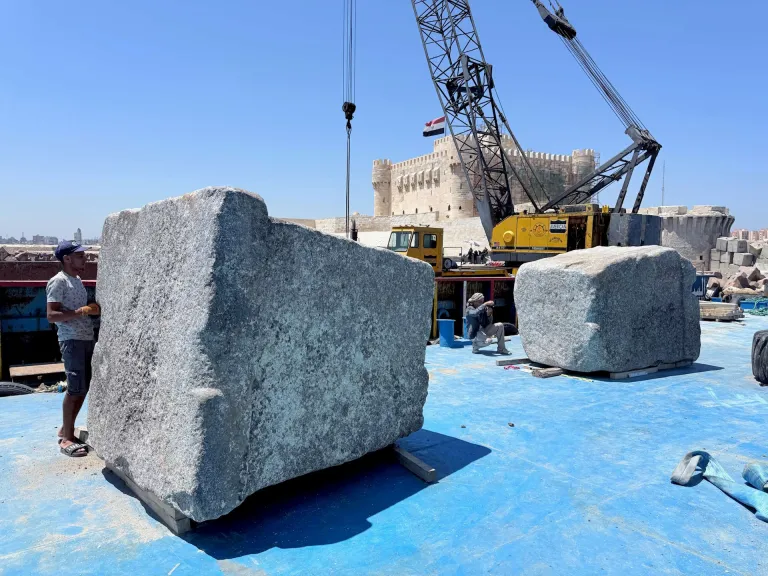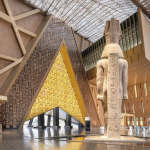
A team from the French National Center for Scientific Research recently lifted 22 massive stone blocks from the Lighthouse of Alexandria from the seafloor, 30 years after the remains were first discovered in Egypt.
The stone blocks include “monumental door lintels and jambs weighing 70 to 80 tons, the threshold, large base slabs, and parts of a previously unknown monument: a pylon with an Egyptian-style door crafted from the Hellenistic period,” according to a June 24 press release from La Fondation Dassault Systèmes, which has supported the project for the last three years.
Each block will be scanned and studied, before being added to a collection of more than 100 blocks that have already been digitized over the past decade, in order to construct a virtual model of the lighthouse.
The Lighthouse of Alexandria was one of the Seven Wonders of the Ancient World. Built in the third century BCE by Egyptian ruler Ptolemy I and reaching a height of 330 feet (100 meters), the lighthouse was one of the world’s tallest man-made structures for hundreds of years until its collapse due to earthquakes.
The excavation was under the scientific supervision of archaeologist and architect Isabelle Hairy from the French National Center for Scientific Research and conducted under the authority of the Egyptian Ministry of Tourism and Antiquities.
In addition to the excavation, research by historians, numismatists, and archaeologists on the PHAROS project includes the collection of “ancient depictions and descriptions of the lighthouse from the late fourth century BCE until its destruction in the early 15th century CE.”
“This research helps to fill gaps left by the highly fragmented archaeological remains, as the lighthouse was quarried for building materials after it ceased operation in 1303 until the construction of the Qaitbay Fortress in 1477,” the press release from La Fondation Dassault Systèmes said.
A French documentary production company, GEDEON Programmes, funded the barge and crane used to lift the lighthouse blocks, and filmed the excavation for a 90-minute documentary that will be shown on French television.
GEDEON Programmes helped cofinance the rescue mission in 1995 when French archaeologist Jean-Yves Empereur of the Centre d’Études Alexandrines first discovered the lighthouse’s underwater remains; resulting in the documentary company producing the acclaimed film The Seventh Wonder of the World.

